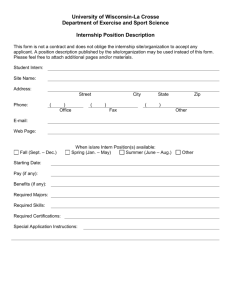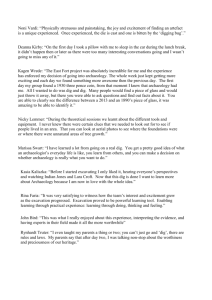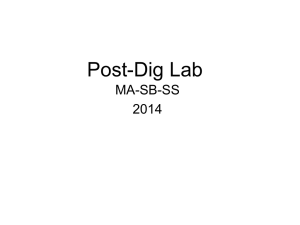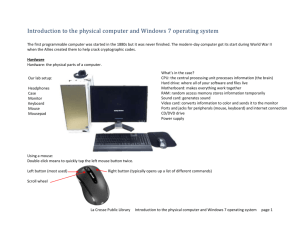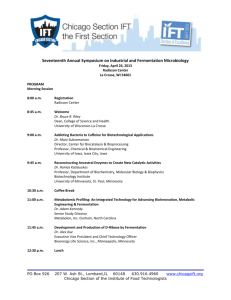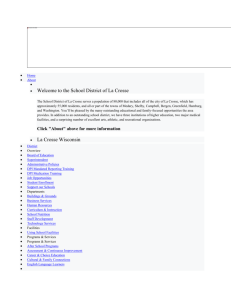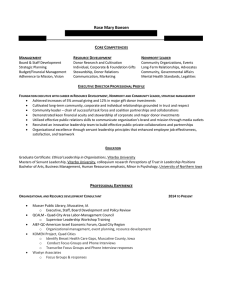Hi,I am Mrs. Thibodeau. I went on an archeological dig and learned
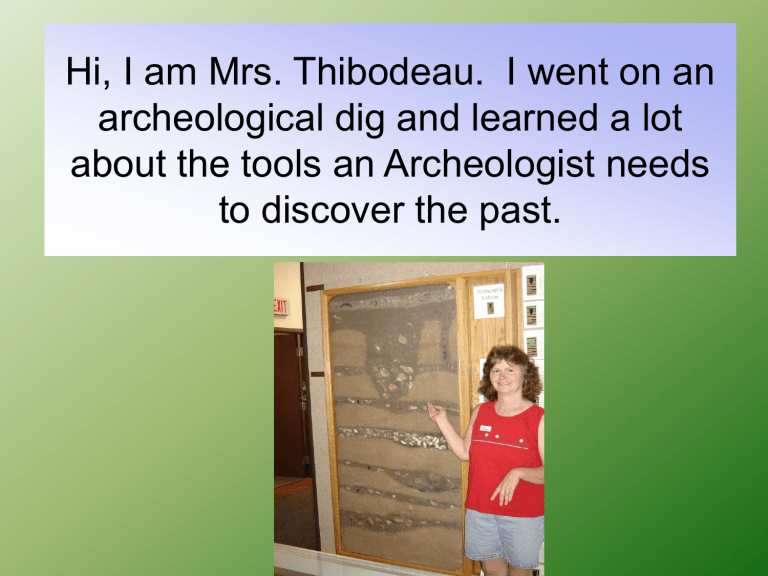
Hi, I am Mrs. Thibodeau. I went on an archeological dig and learned a lot about the tools an Archeologist needs to discover the past.
An Archeologist needs a lot of different tools. Do you think you can figure out what each of these tools is used for?
Do you know what these are used for?
How about in context?
Trowels are used for carefully leveling the ground and to scrape around an artifact.
What would you use these for?
Can you tell now?
Clippers are used to cut any large roots that may be in your feature
( or digging space).
What are these used for?
This should help.
Tape measures are used for several jobs.
You need them to measure the site you are working on and also to mark at what depth and position you find an artifact in.
What is this used for?
Can you tell now?
The level is used to map at what depth you have found an artifact.
What would these be used for?
Did you guess painting?
Paintbrushes are used for carefully removing the loose dirt off an artifact.
Do you know what this would be used for?
I bet this will help.
A bamboo pick is used to carefully remove soil that is stuck to an artifact.
Can you figure out what these gloves are holding?
What would I be doing with this?
A file is used to sharpen your trowel or shovel.
A sharp tool will cut through the soil much easier .
What would this be used for?
Can you tell when it is used in context?
A wire brush is needed to remove the hardened soil from your trowel or brush after a long hard dig.
What is this wooden object in the center used for?
Can you tell now?
A quarter inch screen is used to sift the soil to find small artifacts.
What could this be?
Let’s look at it in context.
A probe is used to dig a small hole about 1 meter into the soil. Then you can look at the different colors of the soil to see if there may be a stain
.
What would you use these for?
Is it easier to tell now?
Spikes are used to mark off your 2 meter square that you are excavating.
Now that you know the tools of an archeologist do you think you are ready to work with an archaeologist on a dig?
•
• Note: This PowerPoint presentation was created by a teacher participating in an ESEA Title II grant-funded project for use in the teachers' classrooms. It reflects the individual’s experience at a particular site and is not intended to accurately reflect what happens on all archaeological investigations around the country or world.
The teacher participated in professional development activities provided by:
• Mississippi Valley Archaeology Center
• University of Wisconsin - La Crosse
• 1725 State Street
• La Crosse, WI 54601
• Web site: http://www.uwlax.edu/mvac/
• All material Copyright © 2000-2005 Mississippi Valley
Archaeology Center at the University of Wisconsin - La Crosse
•
• Note: This PowerPoint presentation was created by a teacher participating in an ESEA Title II grant-funded project for use in the teachers' classrooms. It reflects the individual’s experience at a particular site and is not intended to accurately reflect what happens on all archaeological investigations around the country or world.
The teacher participated in professional development activities provided by:
• Mississippi Valley Archaeology Center
• University of Wisconsin - La Crosse
• 1725 State Street
• La Crosse, WI 54601
• Web site: http://www.uwlax.edu/mvac/
• All material Copyright © 2000-2005 Mississippi Valley
Archaeology Center at the University of Wisconsin - La Crosse
